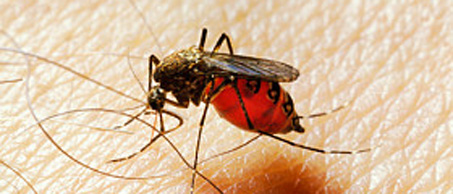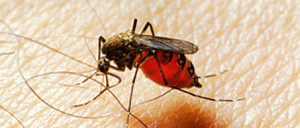
What is malaria?
Malaria is a serious, sometimes fatal, disease spread by mosquitoes and caused by a parasite. The illness presents with symptoms that include high fever and chills.
There are three necessary aspects to the malaria life cycle:
- The Anopheles mosquito that carries the parasite and where the parasite starts its life cycle
- The parasite (Plasmodium) parasite has multiple subspecies, each causing a different severity of symptoms and responding to different treatments.
- The parasite first travels to a human‘s liver to grow and multiply. It then travels in the bloodstream and infects and destroys red blood cells.
Malaria can spread without a mosquito. This occurs rarely and is usually found in a transmission from the mother to the unborn child (congenital malaria), by blood transfusions, or when intravenous-drug users share needles.
What causes malaria
Parasites of the genus Plasmodium cause malaria. Although there are many species of Plasmodium, only five infect humans and cause malaria.
Malaria is caused by one of the following five types of parasites:
- Plasmodium falciparum
- Plasmodium vivax
- Plasmodium ovale
- Plasmodium malariae
- Plasmodium knowlesi
An Anopheles mosquito becomes infected when it bites someone with malaria. Another bite will pass the malaria to a new person.
What are malaria symptoms and signs?
Malaria has a wide spectrum of symptoms. Symptoms usually begin within 10 days to four weeks after being bitten by an infected mosquito. P. malariae may not produce symptoms for a year or more. P. falciparum infections tend to cause more severe symptoms with higher death rates.Once inside the bloodstream, parasites travel to the liver. There they multiply (hepatic phase). During this phase, the infected person has no symptoms.
After several days, the parasites’ offspring are released into the bloodstream. The parasites infect red blood cells. Within 48 hours, the infected red blood cells burst. The parasites infect more red blood cells. This process leads to:
- Recurrent fevers (as high as 106°F)
- Chills
- Muscles aches
- Headaches
- Nausea and/or vomiting
- Diarrhoea
- Anaemia
- Jaundice (yellow colouring of the skin or eyes)
Without treatment, the cycle of red blood cell destruction and fever will continue. This can lead to death.
Malaria is classified as uncomplicated (mild to moderate) or complicated (severe).
Uncomplicated malaria
The most common symptoms are
- fever and chills,
- headaches,
- nausea and vomiting,
- general weakness and body aches
The classic description of a malaria attack (which is rarely observed), would be a six to 12-hour period of cold and shivering alternating with fever and headaches and then a stage of sweating and tiredness (sometimes divided into the cold and hot stage).
Complicated or severe malaria
This occurs when different body systems are affected by malaria.
- Severe anaemia (due to destruction of red blood cells)
- kidney failure
- Cerebral malaria — seizures, unconsciousness, abnormal behavior, or confusion
- Cardiovascular collapse
- Low blood sugar (in pregnant women after treatment with quinine
How do physicians diagnose malaria?
The symptoms of malaria can mimic many other diseases, including typhoid, influenza or a viral syndrome.
The doctor will ask about your symptoms and medical history. A physical examination will be done. You will have blood tests done. The definite diagnosis is made by looking at the blood of an infected patient under the microscope (blood smear) and identifying the presence of the parasite. The patients’ blood is prepared under a slide with a specific stain to help identify the parasite.
Treatment
Prescription drugs are used to treat malaria. They kill the parasites. The choice of an antimalarial agent depends on:
- Type of parasite
- Severity and stage of infection
The following medications are used alone or in combination:
- Chloroquine —In many parts of the world, P. falciparum is resistant to this drug.
- Mefloquine
- Doxycycline
- Clindamycin
- Malarone
- Quinidine
- Quinine
- Artemisinin
- Combination of pyrimethamine and sulfadoxine ( Fansidar )
- Primaquine (for hepatic phase of P. vivax and P. ovale )
Many of these medicines are used to treat resistant strains of P. falciparum .
Check here for your nearest NAFDAC registered chemist. You should always buy your drugs from registered chemist. Also check the registered number of your drugs using regcheckr tool.
Prevention
- Take prophylactic antimalaria medicine, this is particularly recommended for those with sickle cell disease and pregnant women.
- Use of insect repellent when outside.
- Use proper mosquito netting at night.
- Do not rely on electronic mosquito repellents, which are supposed to repel mosquitoes by emitting a sound. These devices do not prevent mosquito bites.
- Seek medical care right away for any illness with high fever.


Leave a Reply